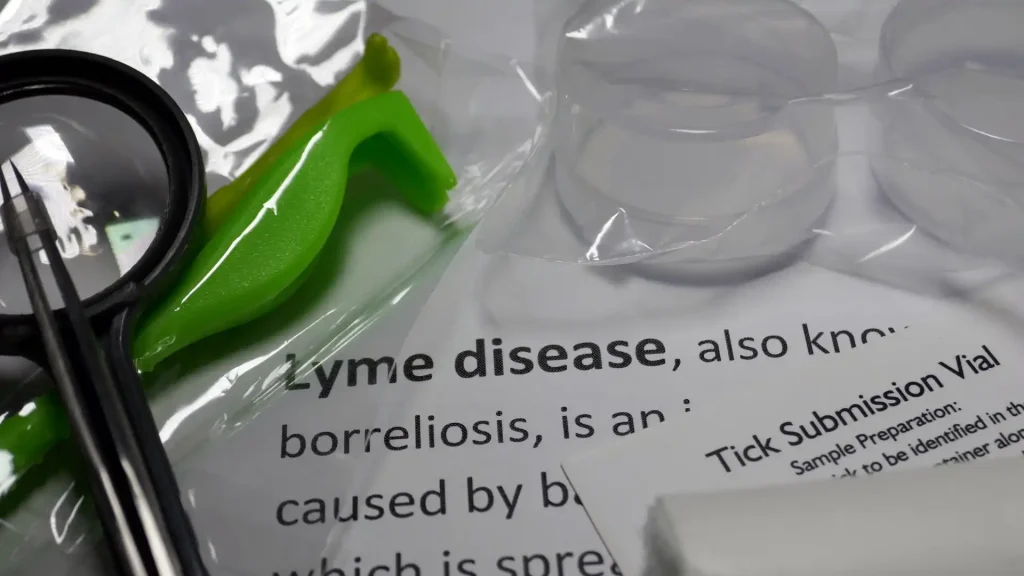Table of Contents
Safeguarding Them from Lyme Disease and Other Illnesses During Flea and Tick Season: A Comprehensive Guide

As the temperatures rise, so does the concern about flea and tick season across the entire United States. However, there’s no need to worry excessively, as ensuring your beloved pets remain safe from these pesky invaders can be easily achieved by adopting a few straightforward precautions.
Understanding the Menace of Fleas and Ticks

Flea and tick season can be challenging for pet owners. These tiny parasites are opportunistic in nature, eagerly latching onto the first warm body that crosses their path, whether it’s you or your loyal canine companion. Once attached to the skin, these pests feed on your pet’s blood. What’s even more concerning is that if they stay attached for an extended duration, they can introduce the Borrelia burgdorferi bacteria into your pet’s body. The transmission of this bacteria can happen in as little as 24 hours.
The presence of this bacterium is the cause behind Lyme disease, a condition that leads to various symptoms including joint inflammation, pain, swelling, stiffness, fever, and loss of appetite. The speed at which treatment is initiated plays a crucial role in whether dogs will develop chronic health issues due to a Lyme disease infection. While occurrences of Lyme disease in cats have been limited to laboratory settings, as reported by the Cornell Feline Health Center, they are still susceptible.
Aside from Lyme disease, these parasites can also transmit an array of other diseases to animals, such as Rocky Mountain spotted fever, tick paralysis, ehrlichiosis, anaplasmosis, and bartonellosis. These illnesses can manifest in different ways, ranging from swollen lymph nodes to anemia and, in severe cases, even death. Notably, the symptoms of tick-borne illnesses might not become apparent until several months after your pet’s initial exposure.
Recognizing the Telltale Signs of Flea Infestations

Although flea bites usually aren’t quite as serious as tick-borne illnesses, they can make your pet very uncomfortable. Since fleas reproduce fairly quickly, the entire family may soon start scratching. Fleas can also affect pet rabbits, guinea pigs, and other small animals.
Pets that have flea infestations may compulsively scratch, bite, or lick their skin, causing bald or raw spots. You may also notice flea “dirt,” small black specks in your pet’s fur. If an infestation is severe, or your pet is allergic to fleas, anemia can occur. Pets that are anemic may develop pale lips or gums, weakness, fatigue, and loss of appetite.
How You Can Protect Your Pet

Though the consequences of flea bites may not be as dire as those of tick-borne illnesses, they can still bring discomfort to your pet. Flea and tick season can lead to itching and scratching, and if not addressed promptly, the whole family might find themselves scratching away. It’s important to note that fleas can also impact smaller pets like rabbits and guinea pigs.
When flea and tick season is in full swing, pets that are plagued with flea infestations often exhibit incessant scratching, biting, or licking of their skin. This behavior can result in bald patches or raw spots on their bodies. You might also notice the presence of what’s commonly referred to as flea “dirt,” appearing as small black specks within your pet’s fur. In more severe cases, or if your pet happens to be allergic to fleas, anemia can set in. Anemic pets may display pale lips or gums, weakness, fatigue, and a decreased appetite.
Taking Steps to Shield Your Precious Pet

Fortunately, a variety of preventive medications for fleas and ticks are available to ensure your pets’ well-being during flea and tick season. These treatments are specifically designed to eliminate adult ticks and fleas, while also inhibiting the maturation of their larvae and eggs.
These preventive solutions come in various forms, such as spot treatments, collars, sprays, shampoos, and other formulations. However, before you begin administering any preventive treatment, it’s advised to consult your pet’s veterinarian to ensure its safety for your furry friend.
Keeping Your Yard Free from Fleas and Ticks

Applying flea and tick spray to your yard’s grass, shrubs, and plants on a monthly basis can preemptively eliminate these pests before they have a chance to target your pets. However, it’s imperative to allow these sprays to fully dry before granting your pet access to the treated area.
Clearing Debris and Brush

Quickly removing brush and debris from your yard can effectively eliminate potential breeding grounds for various insects and pests. While fleas and ticks are drawn to long grass, it’s important to find a balance, as grass that is too short can inadvertently create problems. Grass shorter than two inches may result in the displacement of spiders that naturally prey on fleas.
Establishing a Protective Yard Fence

While you may diligently treat your pets for fleas, it’s not guaranteed that your neighbors are as proactive. Even brief visits from cats and dogs can leave behind fleas, which is why installing a protective fence is a smart move. This not only discourages neighboring pets from entering your yard but also prevents infestation from wild animals.
Swift Tick Removal

Promptly removing ticks significantly reduces the risk of your pet contracting Lyme disease or another tick-borne illness. Use tweezers to grasp the tick’s head and gently extract it straight from your pet’s body. Take care to avoid crushing or twisting the tick. After removal, place the tick in a container filled with alcohol.
Should you suspect that your pet may be affected by fleas or a tick-borne illness, don’t hesitate to contact our office to schedule an appointment.
Further Reading and Sources
Cornell Feline Health Center: Lyme Disease
American Kennel Club: 4 Tips to Help Keep Your Dog Safe from Fleas and Ticks, 3/15/16
U.S. Environmental Protection Agency: Controlling Fleas and Ticks on Your Pets
ASPCA: Fleas and Ticks
Scotts: How to Treat Fleas in the Yard
PetMD: Tick-Borne Diseases and Your Pet
Discover Our Pet Care Blog Series
Welcome to Our Pet Care Blog Series by MY OWN VETS, your local veterinarian in the GTA.
Embark on a comprehensive journey through our carefully curated collection of pet care articles, designed to equip you with the knowledge necessary to provide unparalleled care for your cherished furry companions. Encompassing topics ranging from nutrition and grooming to first-time ownership and travel advice, our series is a definitive resource for pet lovers. By exploring the internal links below, you can access each article individually, enriching your understanding of pet care. Join us on this enlightening voyage and nurture an unbreakable bond with your beloved pets.
Chocolates and Pets: A Risky Combination You Should Know About.
The Basics of Pet Grooming: How to Get Started.
Understanding the Basics of Pet Nutrition: A Beginner’s Guide.
10 Essential Tips for First-Time Pet Owners.




